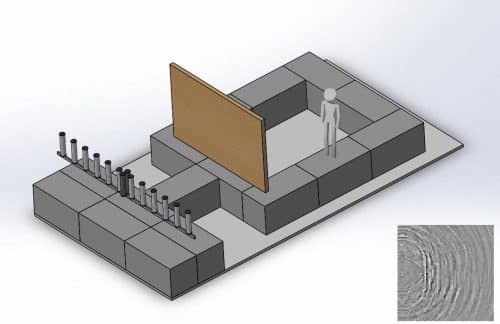This method using Radio signals gives a ray of hope for advancements in safety equipment.
Similar to the Radar technology used in defence systems, the imaging method developed by the researchers at the National Institute of Standards and Technology (NIST) and Wavsens LLC, uses radio signals to create real-time images and videos.
This new method could help provide essential information on hidden and moving objects making it easy to find escape routes and hence reducing injuries or even deaths. The new method, published in Nature Communications, could also help track hypersonic objects such as missiles and space debris.

“Our system allows real-time imaging around corners and through walls and tracking of fast-moving objects such as millimetre-sized space debris flying at 10 kilometres per second, more than 20,000 miles per hour, all from standoff distances,” said physicist Fabio da Silva, who led the development of the system while working at NIST.
Radio signals are known for their robustness and ability to penetrate through almost all kinds of surfaces be it glass or concrete. “It’s pretty cool because not only can we look behind walls, but it takes only a few microseconds of data to make an image frame. The sampling happens at the speed of light, as fast as physically possible.” Said Silva.
The Imaging Method
The method uses the concept of a multisite radar in which electromagnetic pulses are sent and reflected back to and from the objects, giving important measurements such as the distance. Unlike the multisite radar, however, this method utilises multiple transmitters and just one receiver. This meant that any signal from objects that were reflected back could be accurately located and measured.
Operating at frequencies from 200 megahertz to 10 gigahertz, a group of 12 antennas along with a signal digitizer were used in this method. By Combining the hardware along with signal processing and modelling techniques, the system was able to generate 4096-pixel images, with a resolution of about 10 centimetres across a distance of 10-meters.
Safety equipment designers can integrate this technology into their systems, which could enable quicker responses and avoid disastrous situations. In addition, it could also be used to measure the velocity of shock waves, a key metric for evaluating explosives, and to monitor vital signs such as heart rate and respiration.







